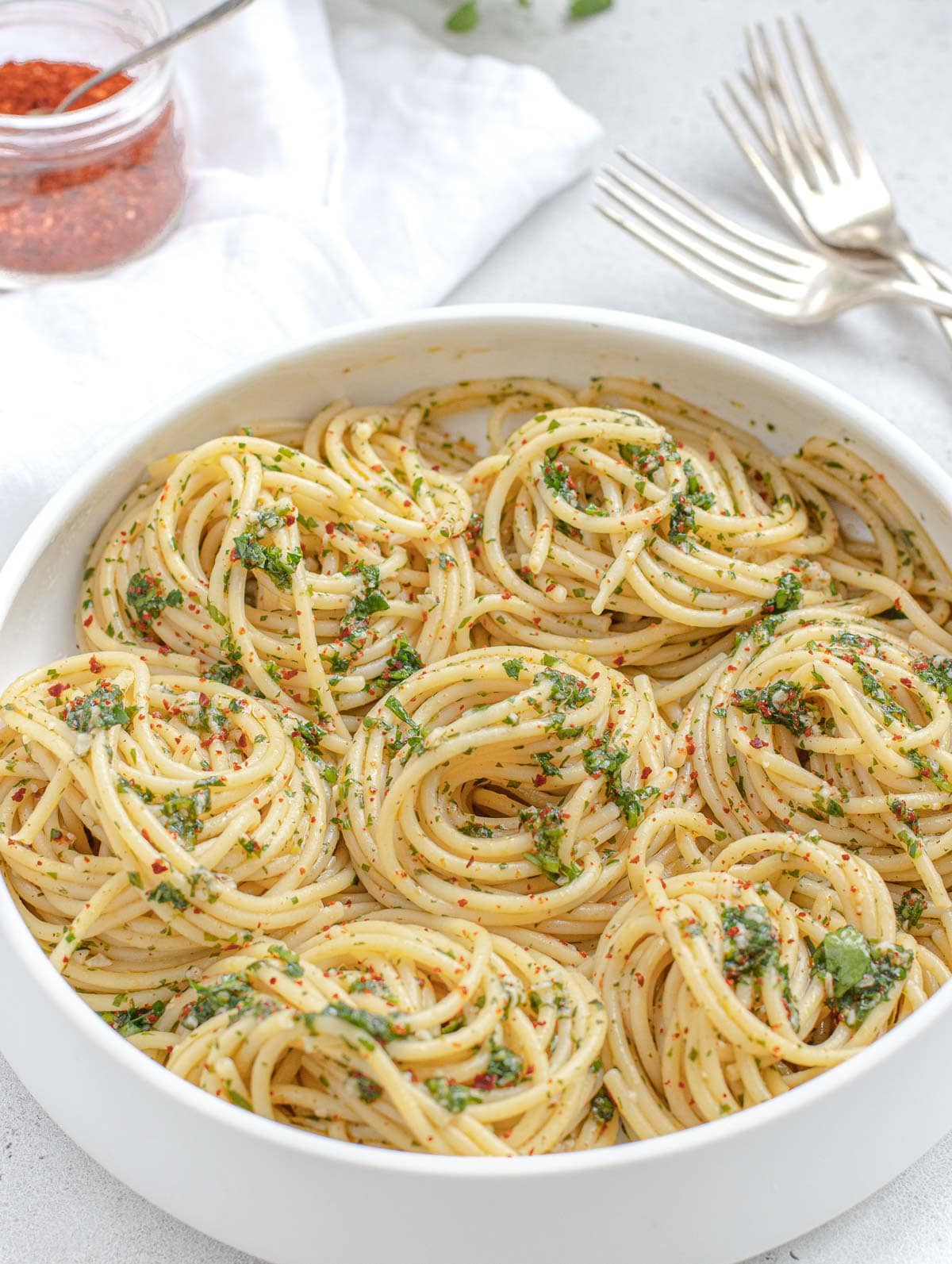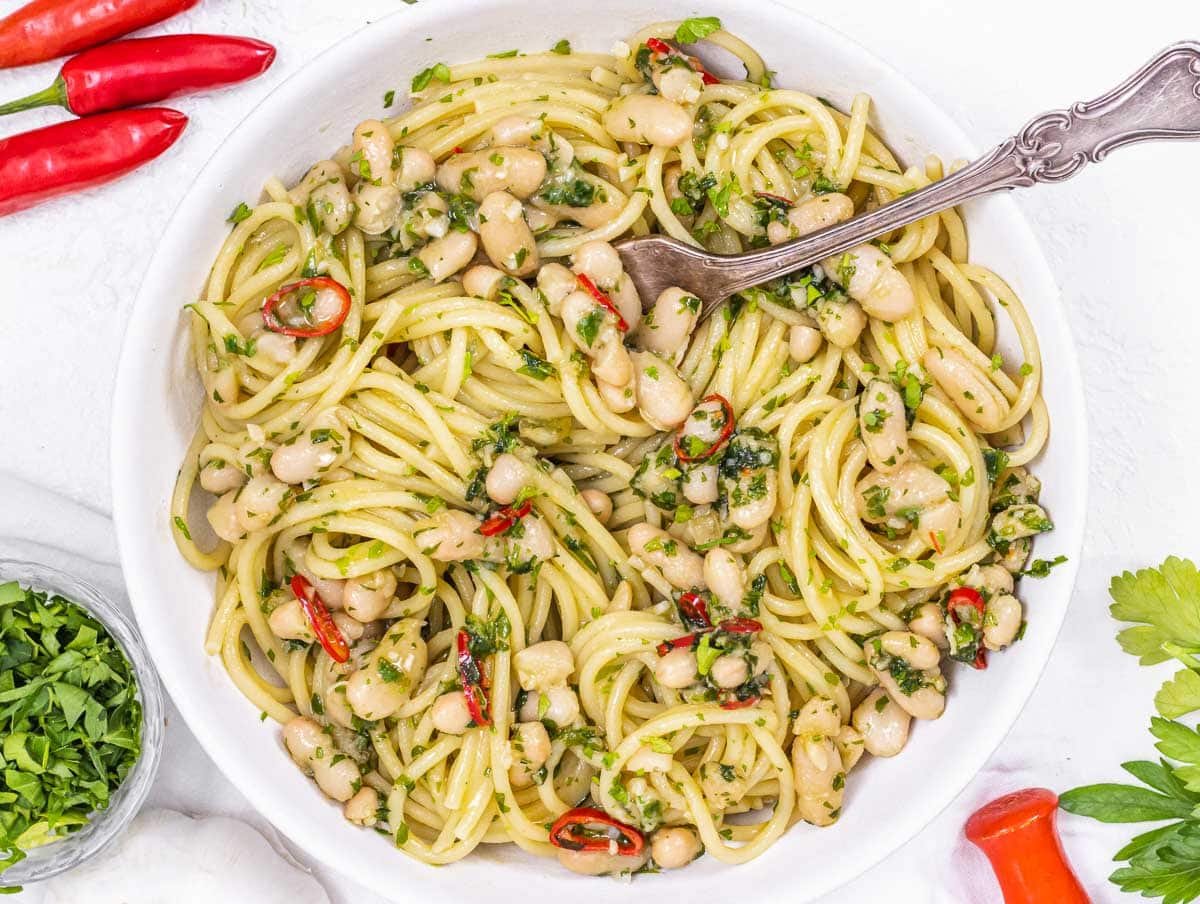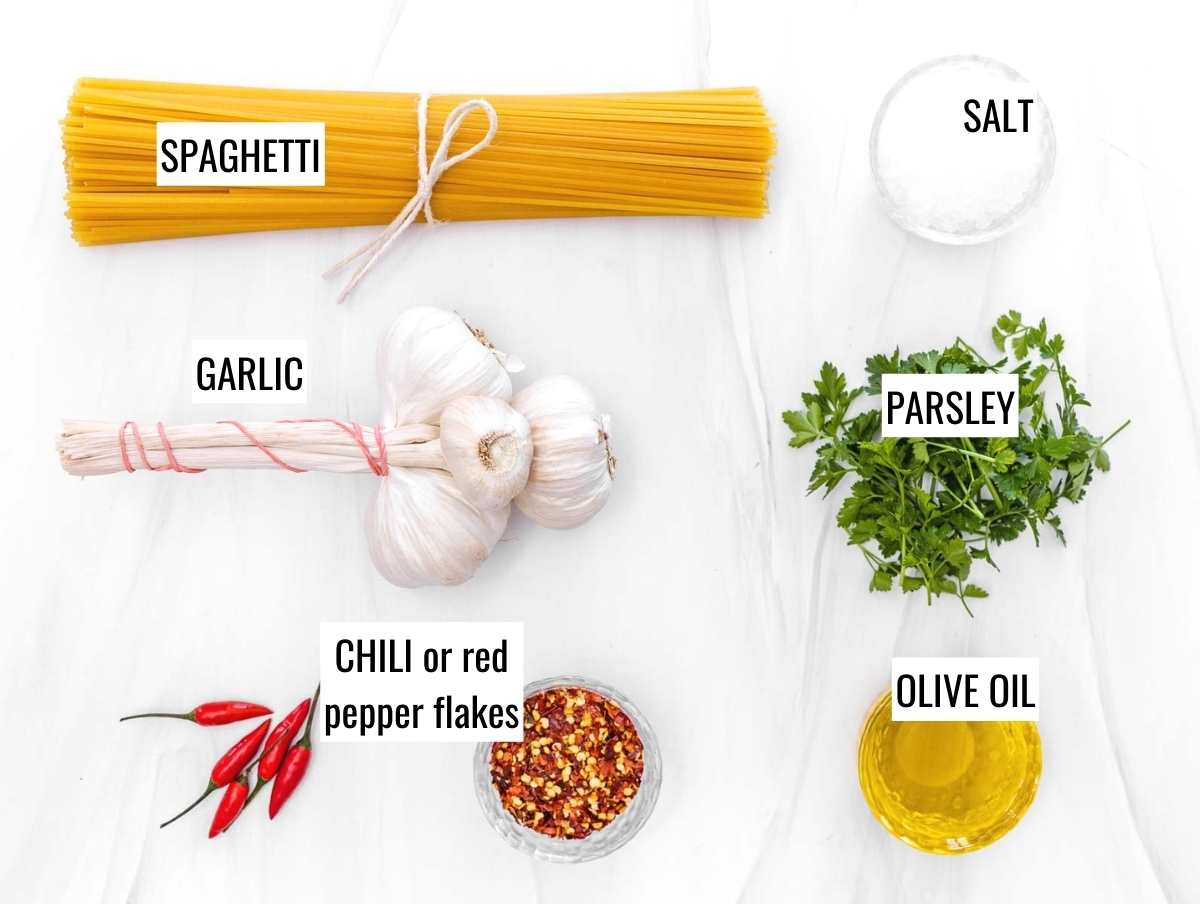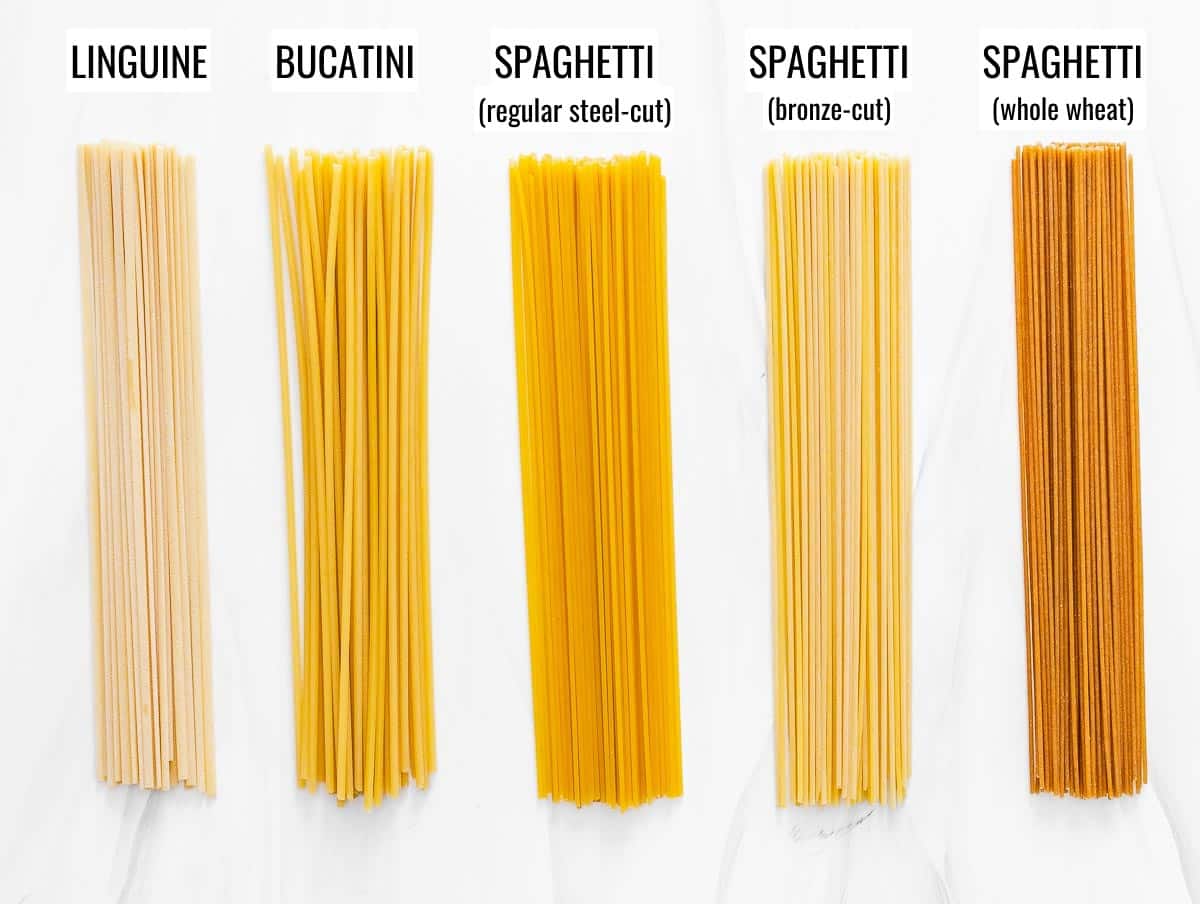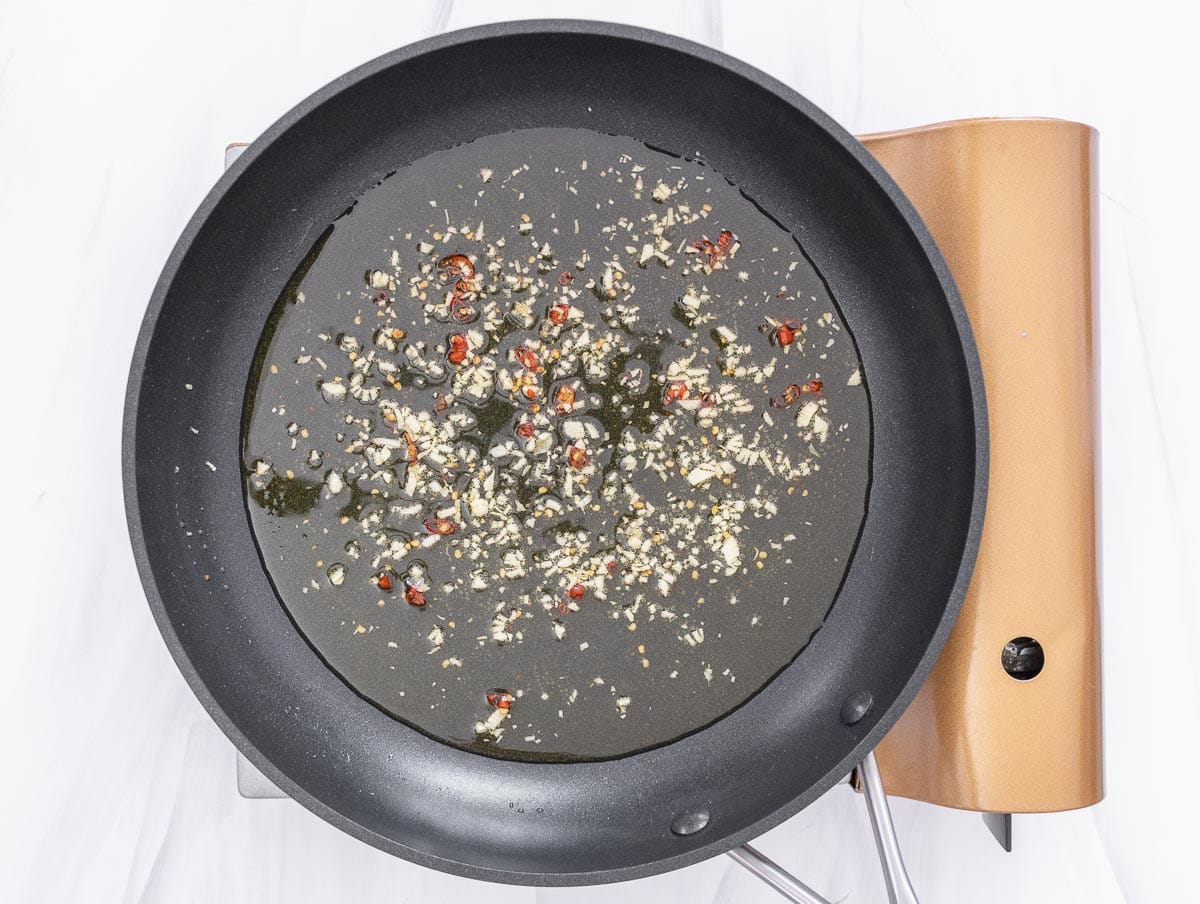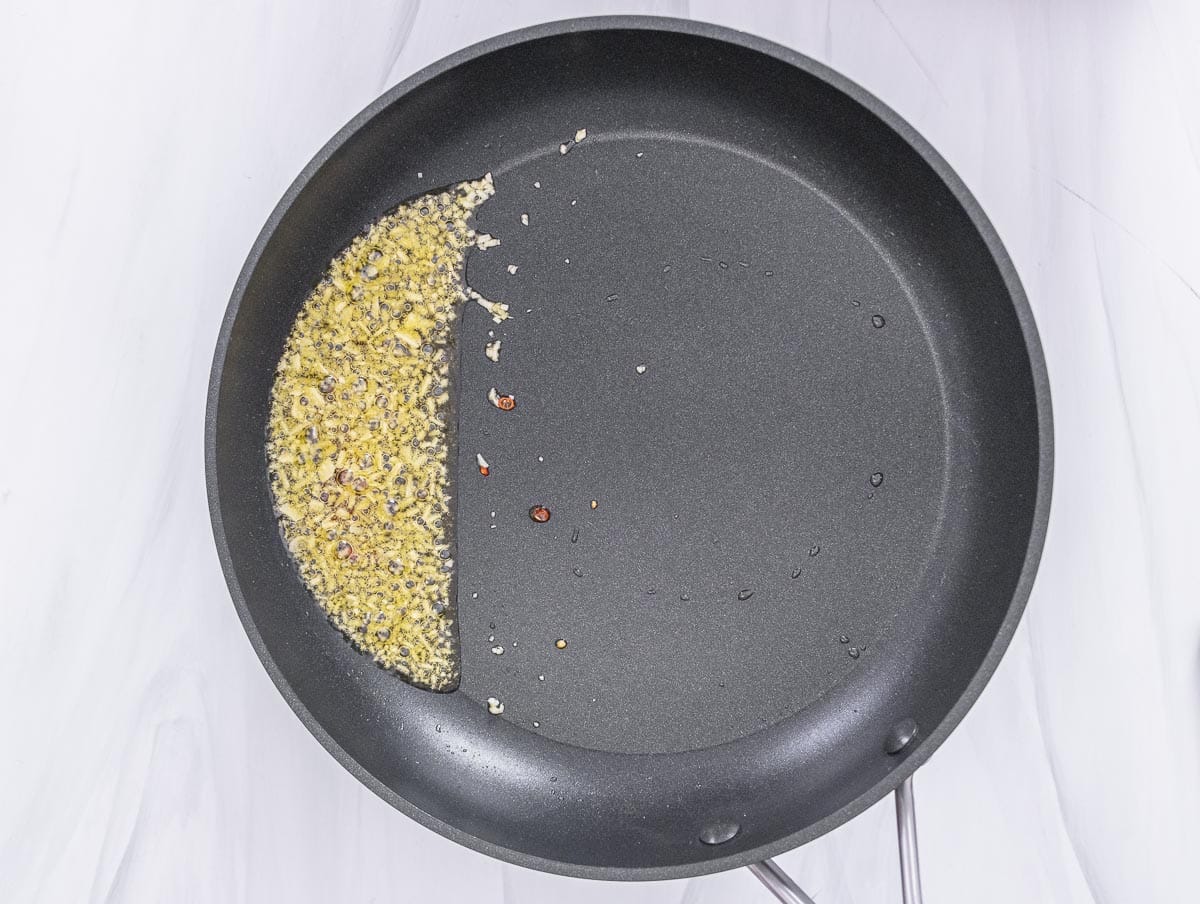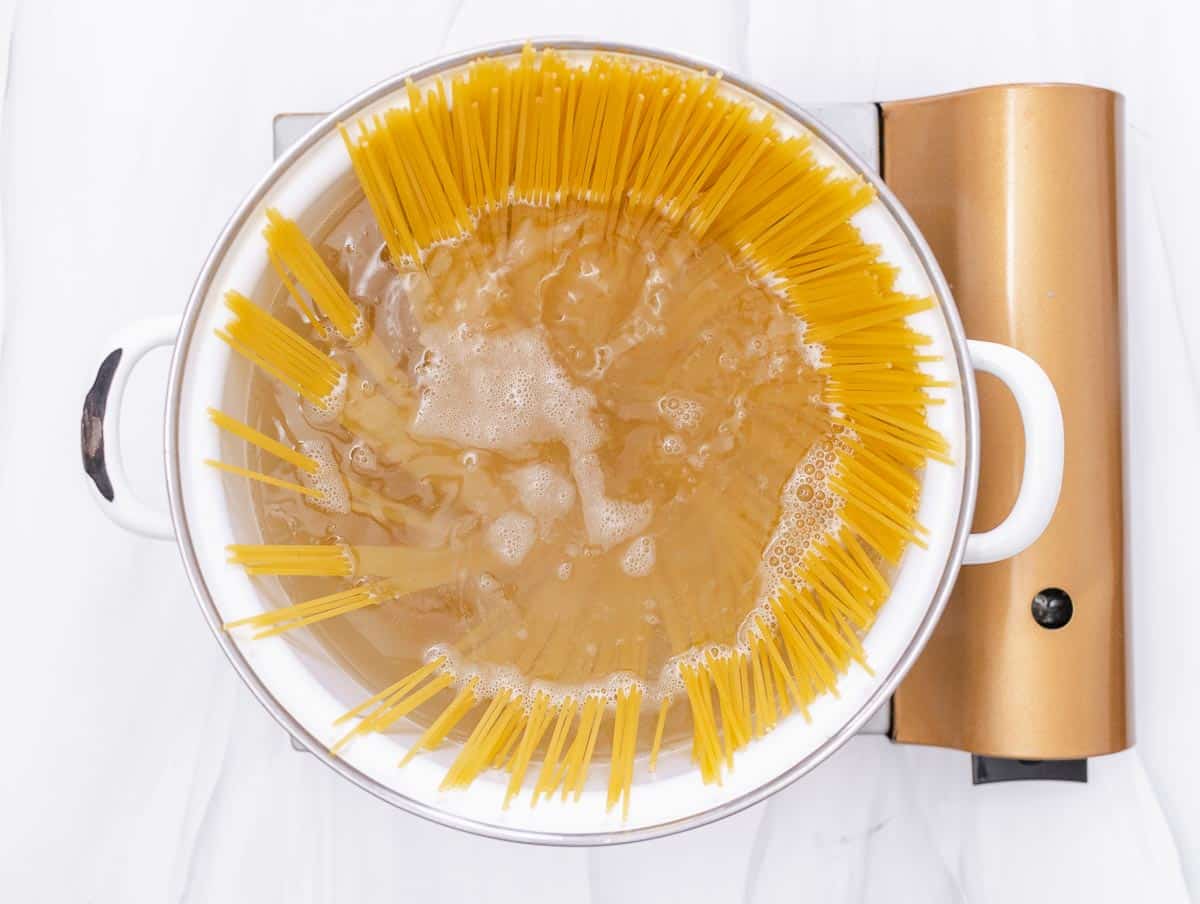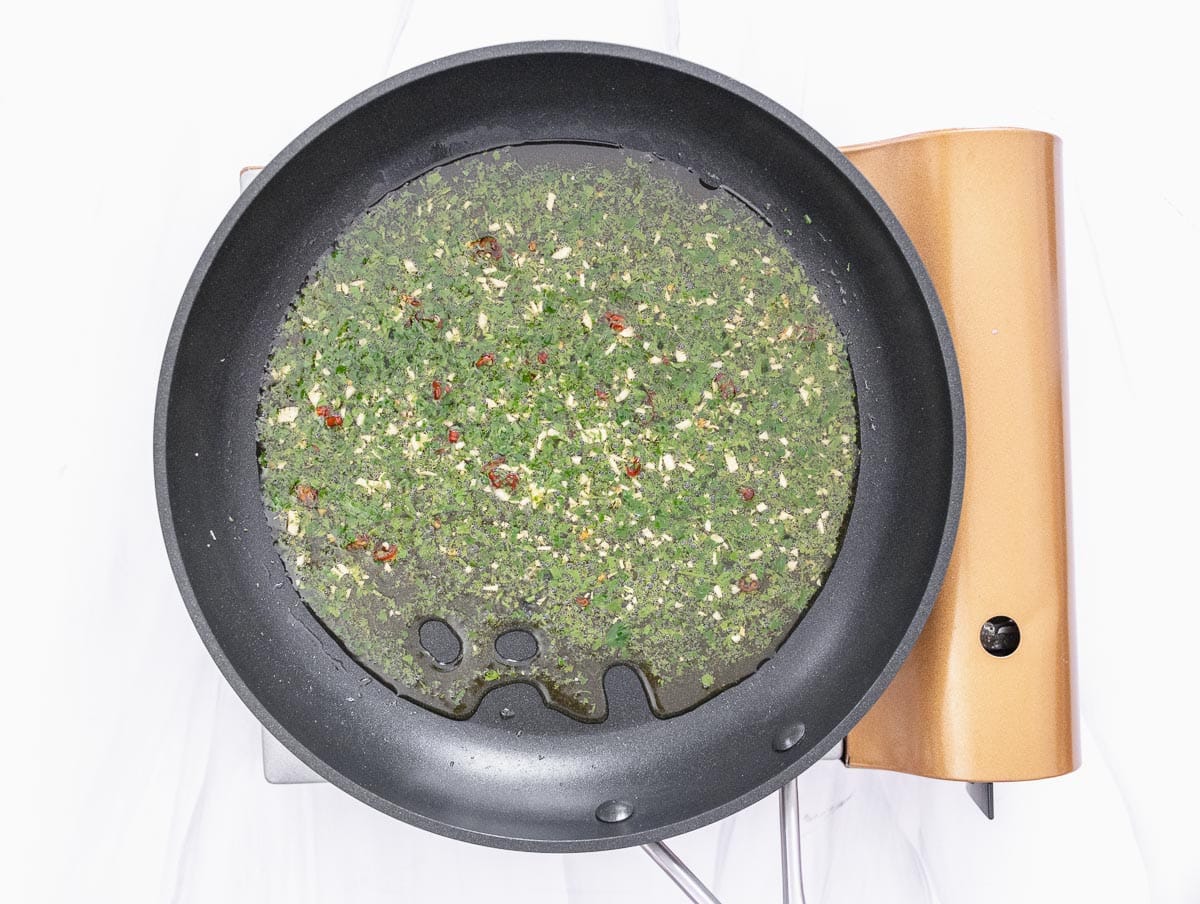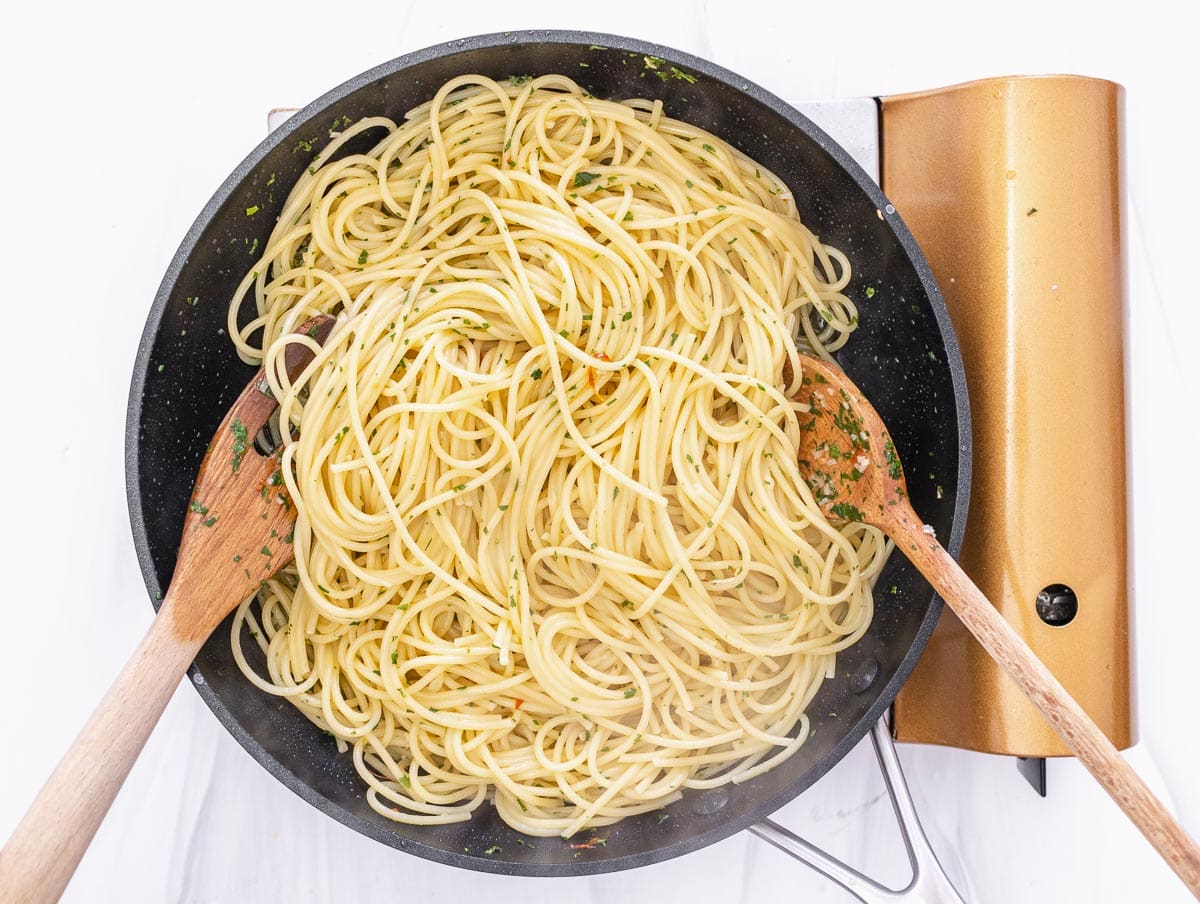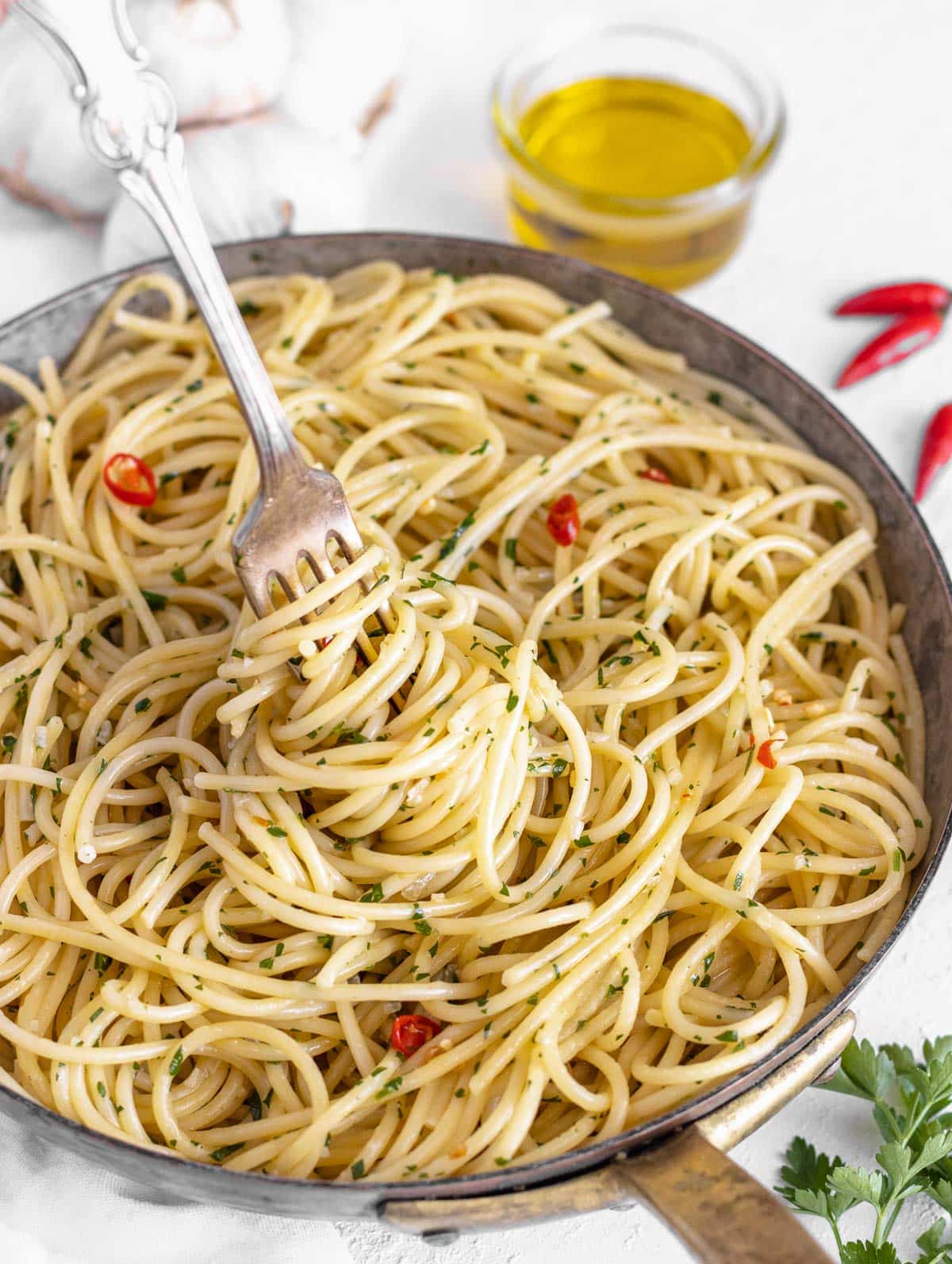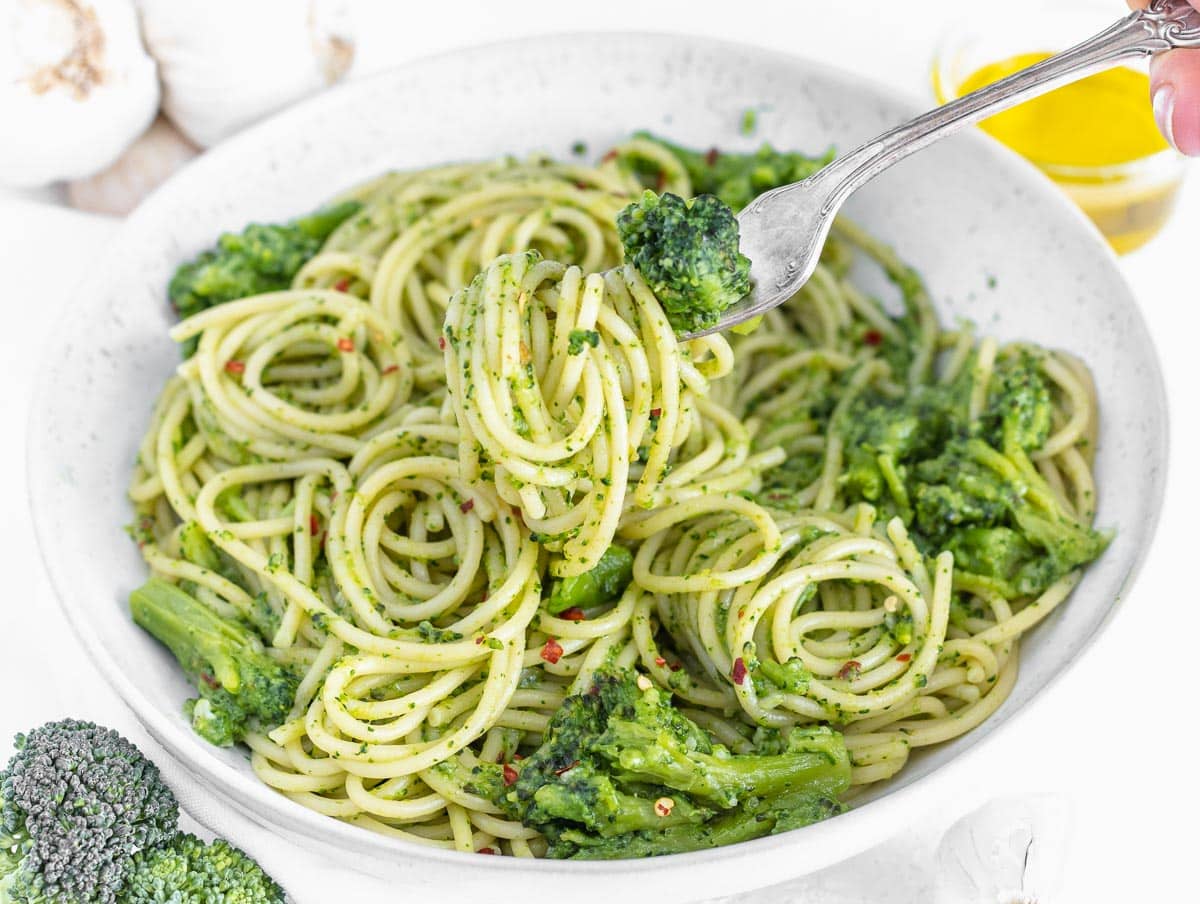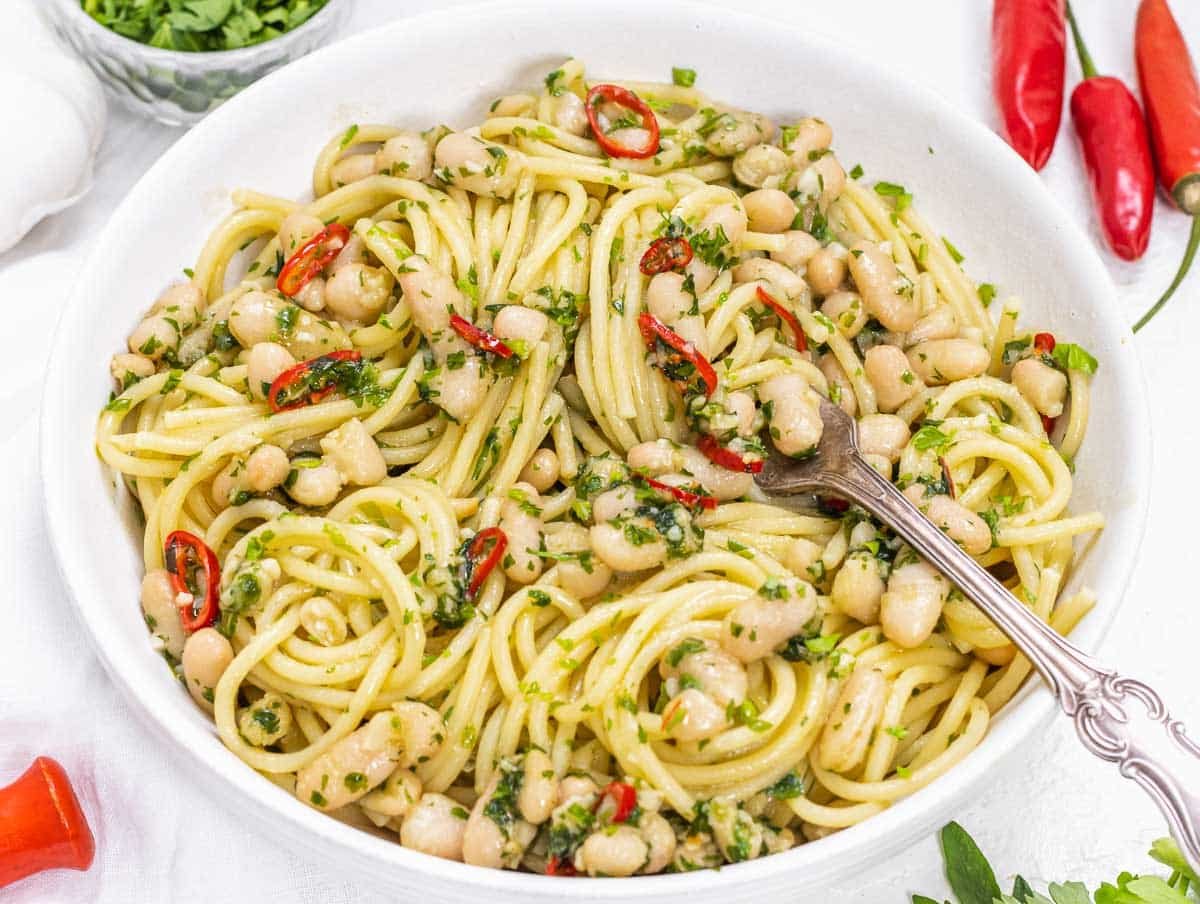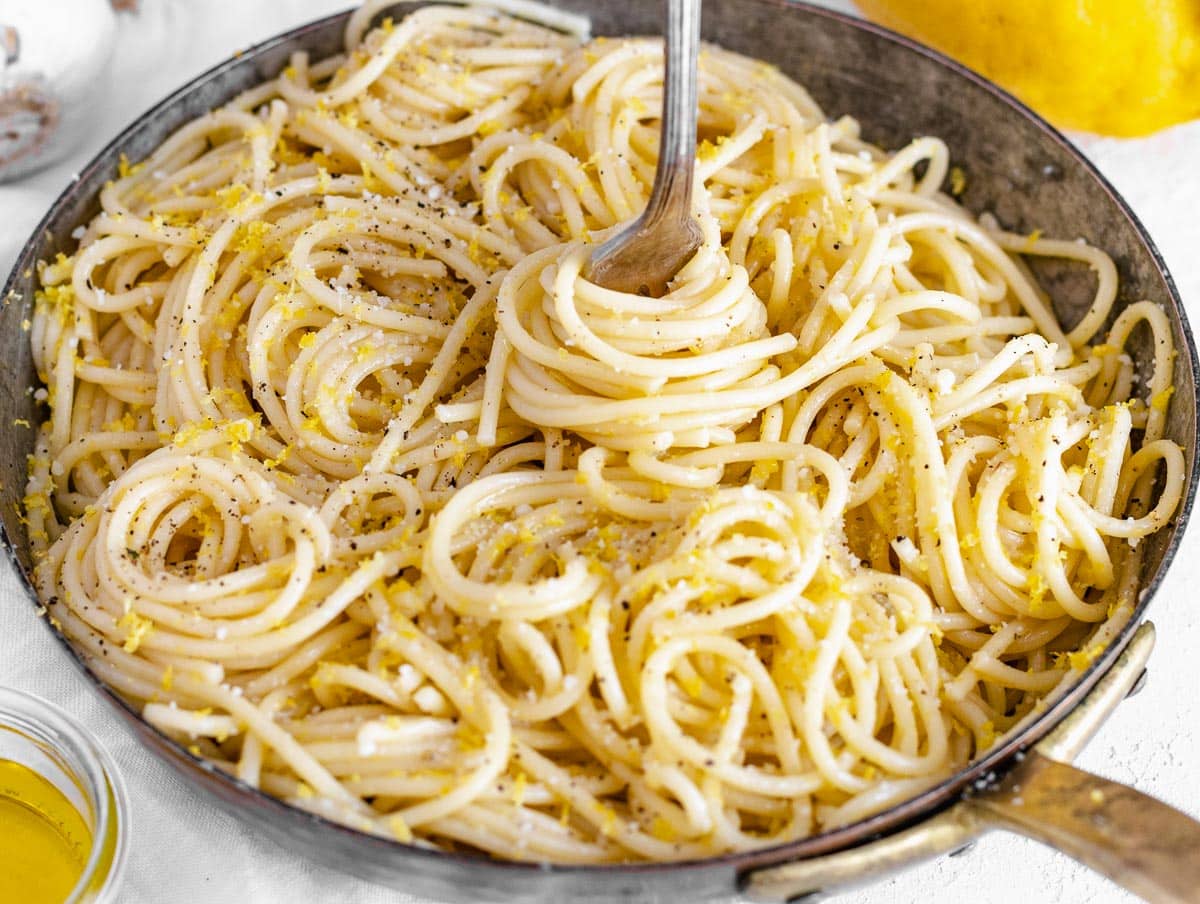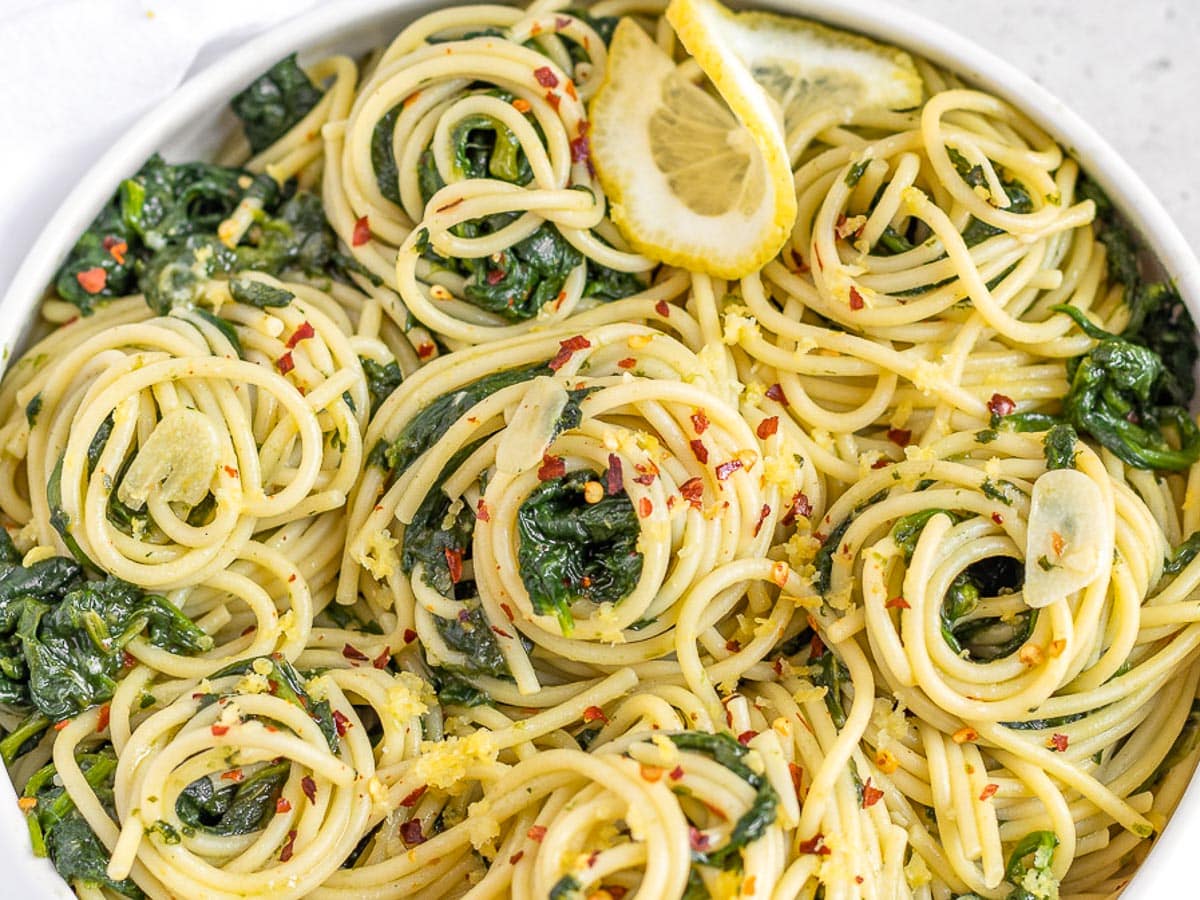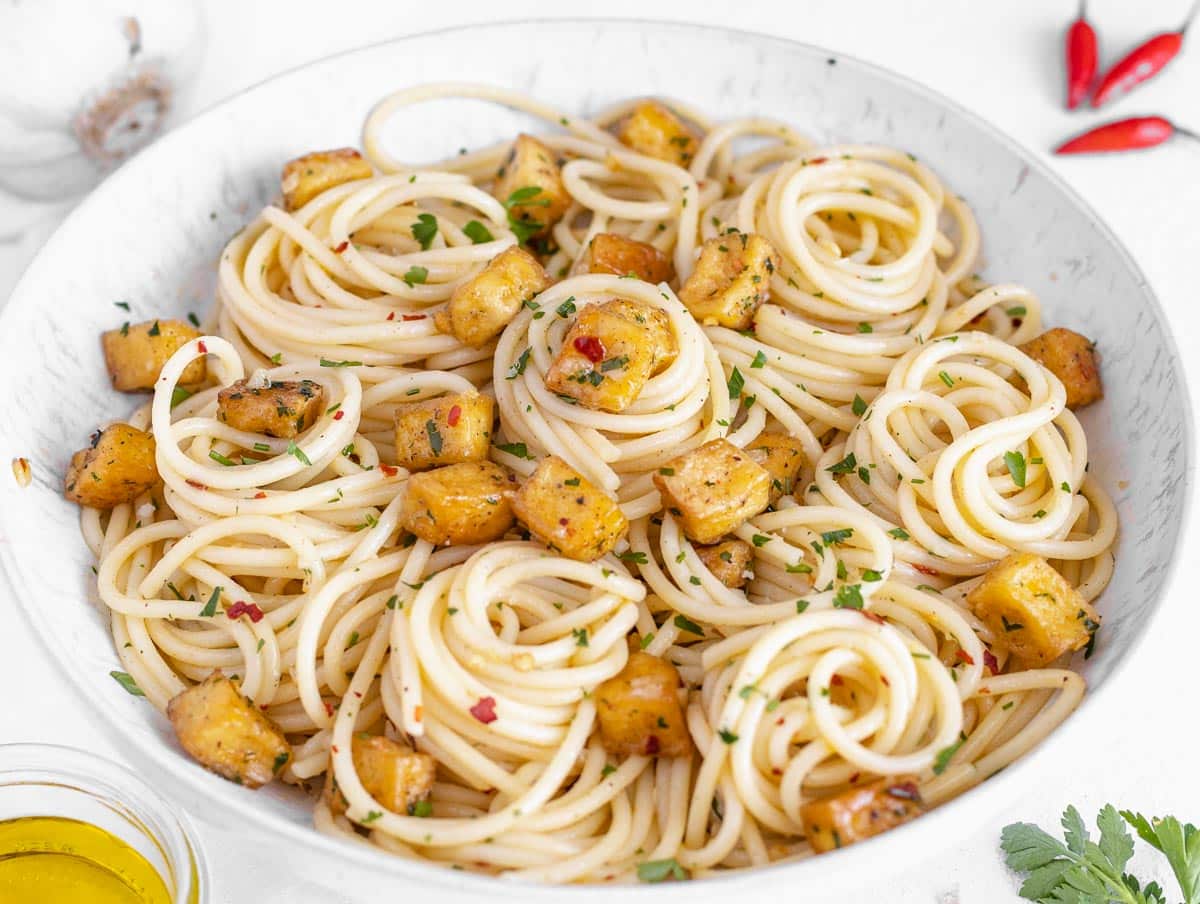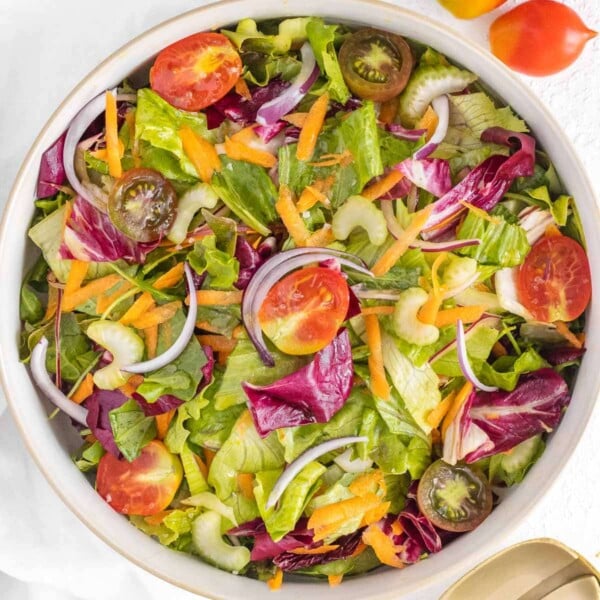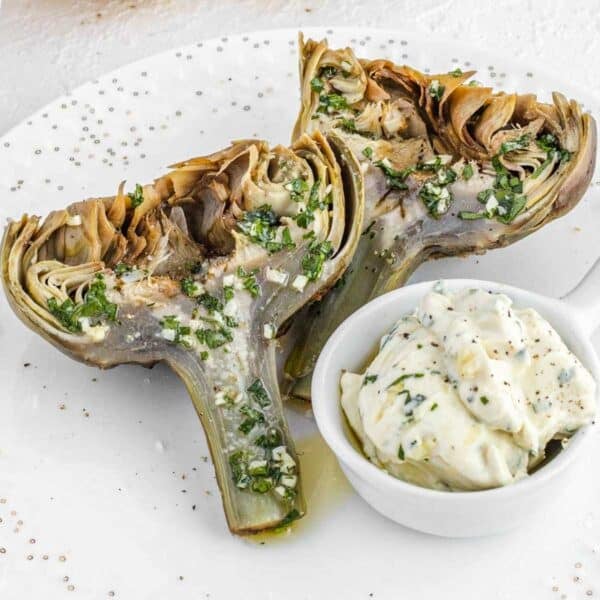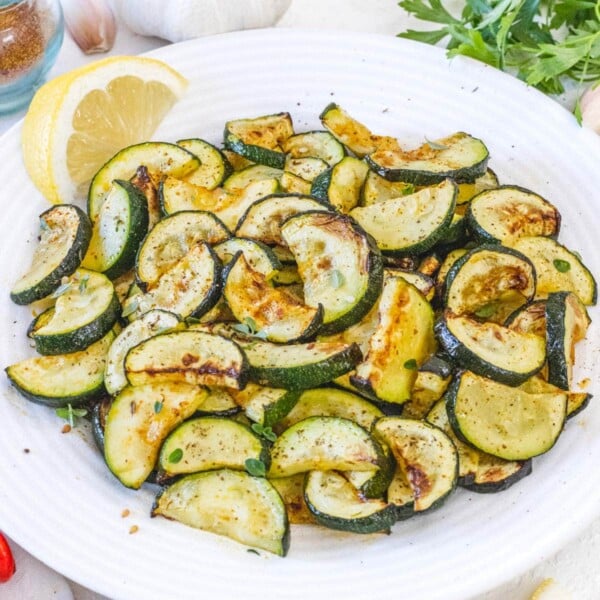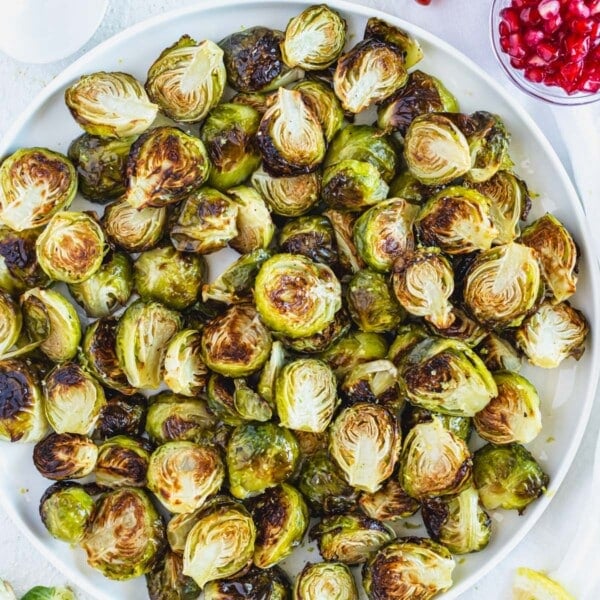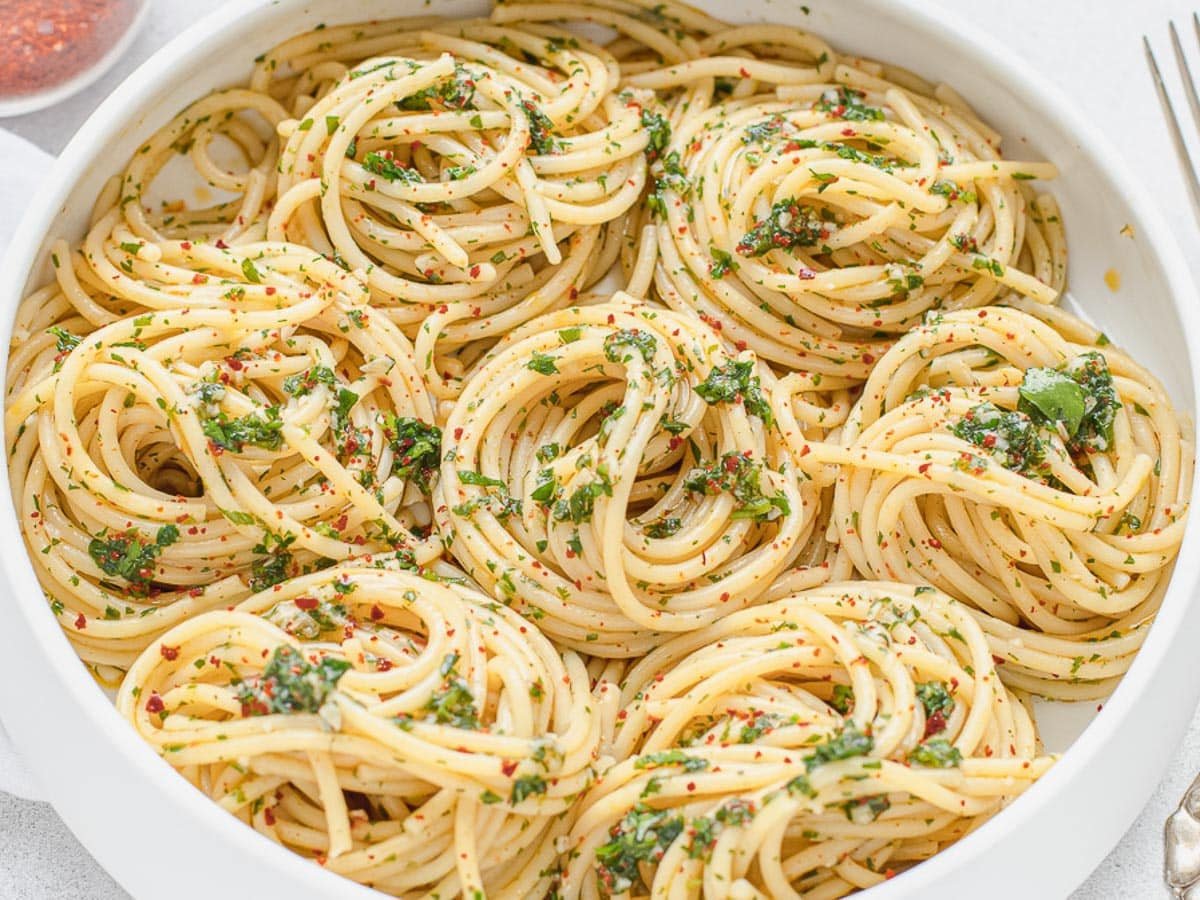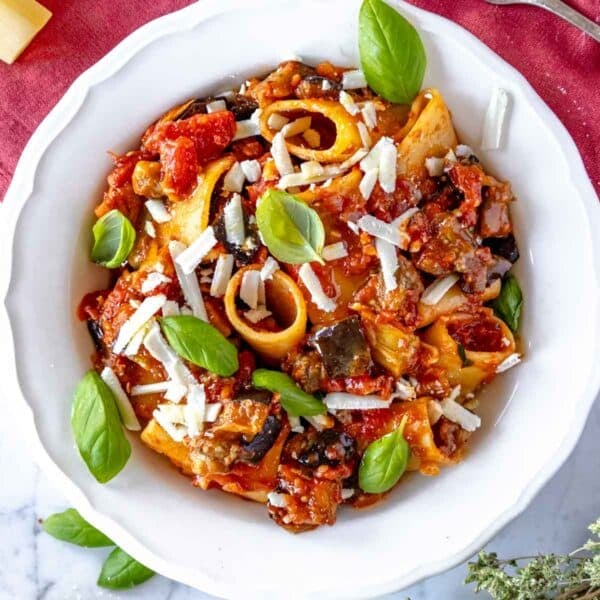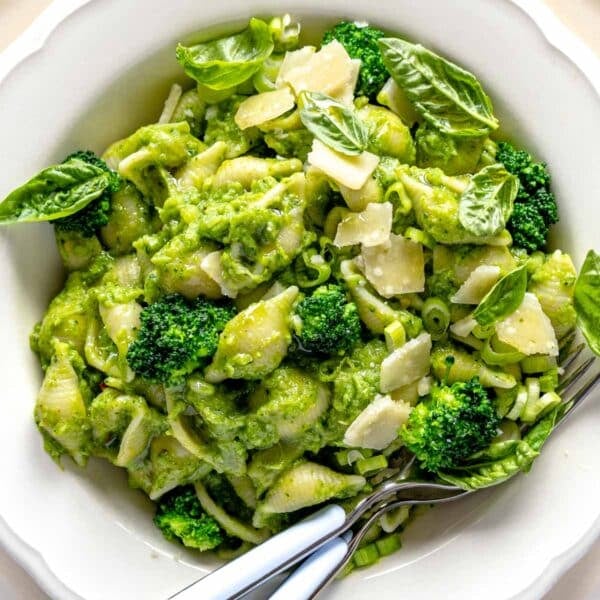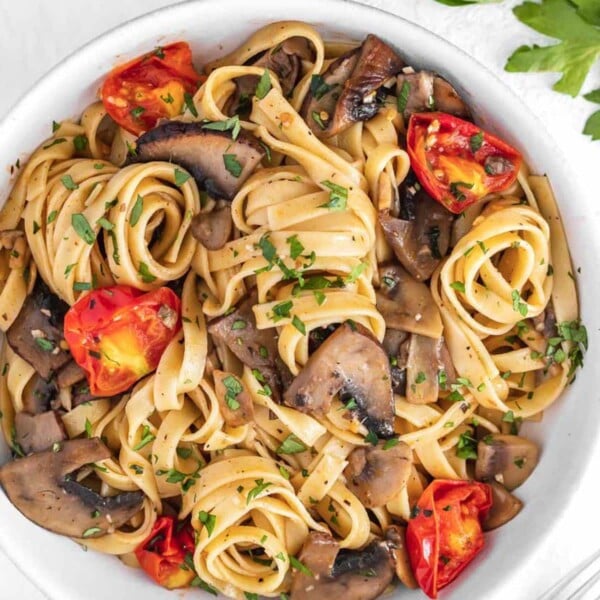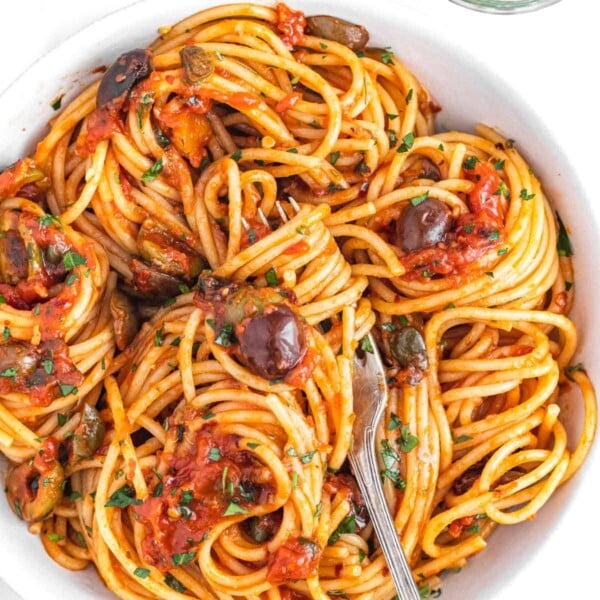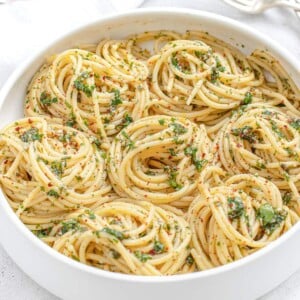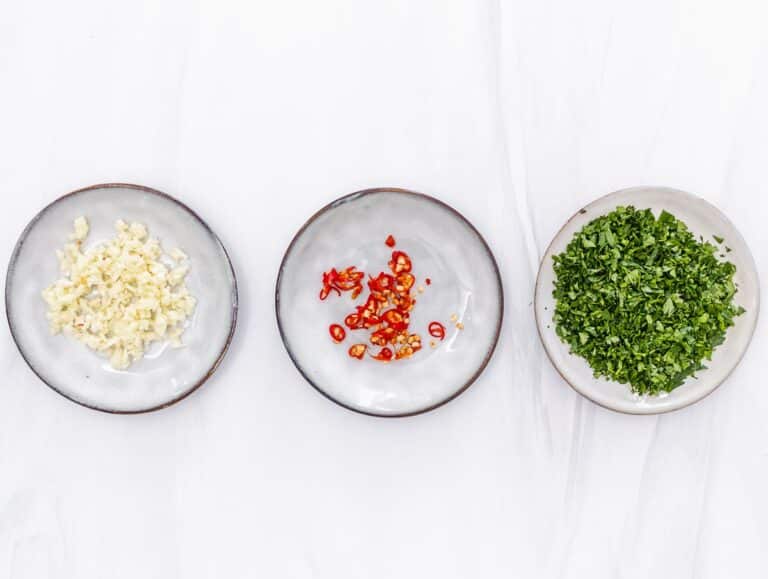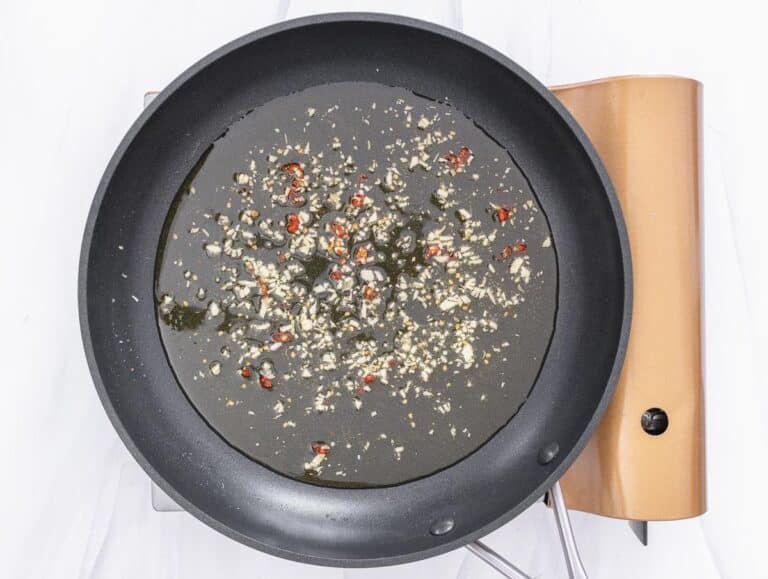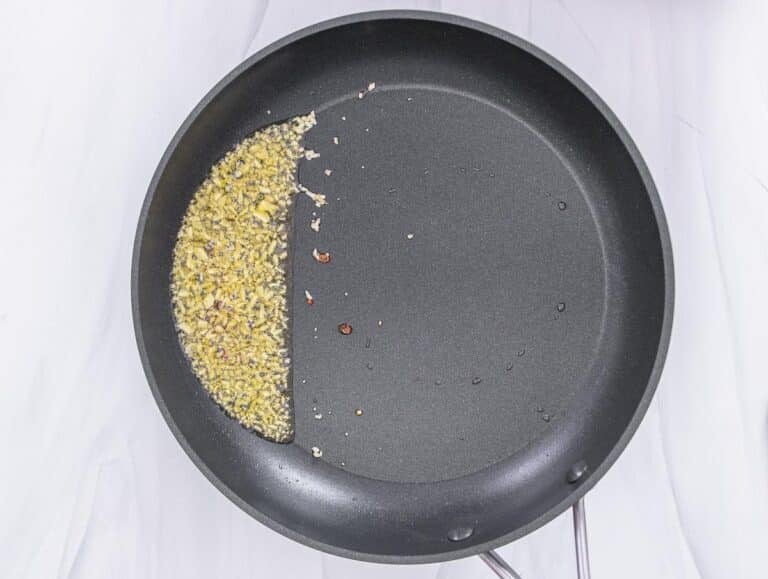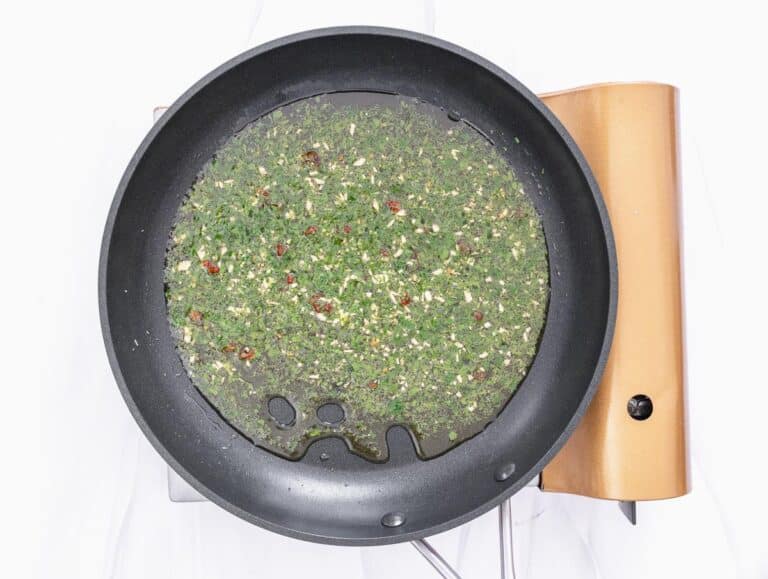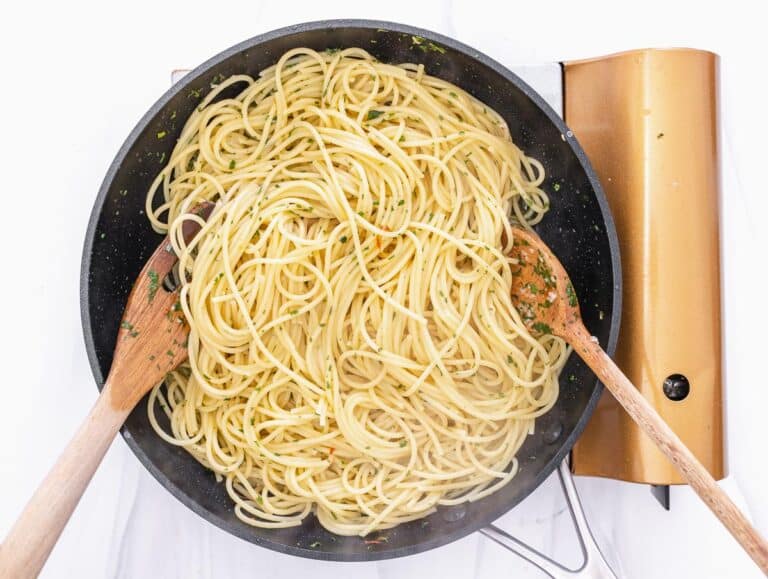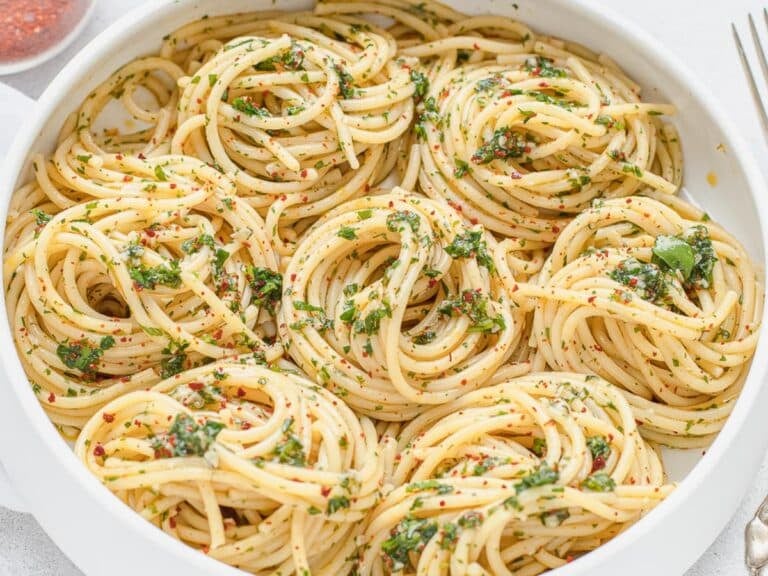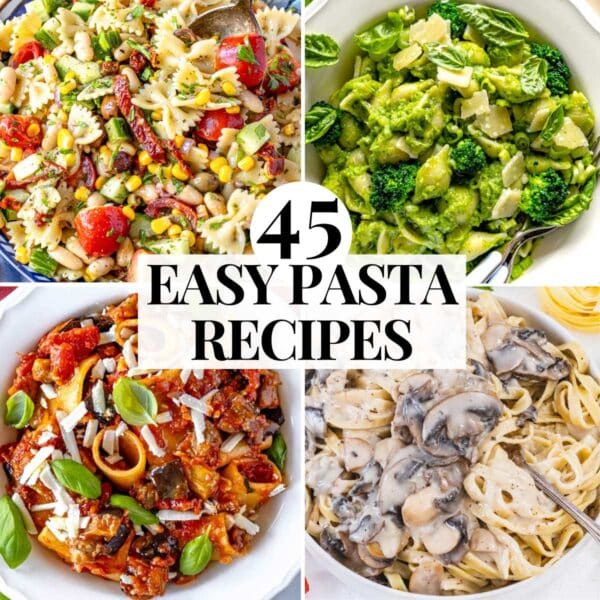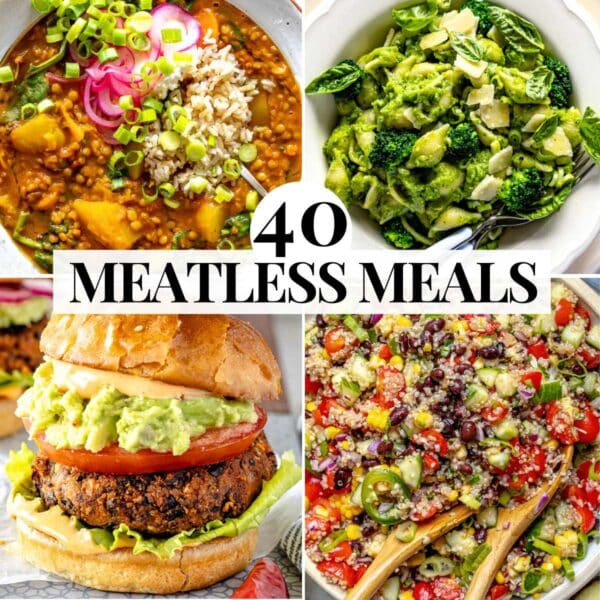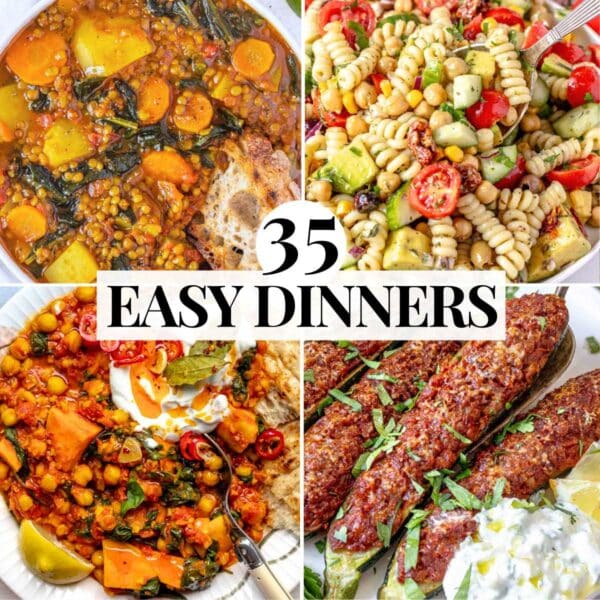We’ll show you how to make this recipe to perfection in under 15 minutes and give you plenty of ideas on how to add your favorite veggies to turn it into a delicious family dinner. Check out our best pasta recipe collection!
Ingredients
Garlic
Instructions
Variations
Serving suggestions
Tips
Storage
While this dish is delicious on its own, it’s also the perfect base recipe to build on and customize with your favorite veggies. Check out our variations chapter below to see how we make it with cannellini beans, broccoli, lemon, spinach, and pan-fried tofu. I don’t recommend grating or pressing the garlic because it’ll become a mash as you fry it in oil. Also, garlic powder won’t work for this recipe.
Olive oil
Extra virgin olive oil is the main ingredient in this recipe. Try to get a good quality one if you can; spaghetti aglio e olio won’t taste good if your oil is low quality or rancid.
Red chilies or red pepper flakes
Aglio e olio is spicy, but not unbearably so. You can use red hot chili peppers, fresh or dried, or you can add a sprinkle of red pepper flakes. Whatever you choose, adjust spiciness based on your taste.
Parsley
Fresh parsley, the flat-leaf kind, is also known as Italian parsley in the USA. Finely chop it with a knife before adding it to the sauce.
Pasta
I recommend a long pasta shape, best if bronze-cut (it says so on the package) because its rugged and dusty surface sticks better to the sauce. You can use spaghetti, linguine, bavette, bucatini, tagliatelle, fettuccine, and even angel hair pasta. For gluten-free, use gluten-free spaghetti.
Water
To cook the pasta. Also, reserve about a cup of pasta cooking water to add to the aglio e olio sauce. The starchy pasta water will make the dish creamy and delicious.
Salt
You’ll need a pinch of salt for the sauce and a good handful for seasoning the pasta water. We recommend sea salt or kosher salt. Add the olive oil to a large skillet.Set the heat to low, then when the oil is warm, add the finely chopped garlic and the finely chopped chili.Fry in the oil for approximately 30 seconds, then turn the heat off and let fry gently with the pan’s residual heat. Set aside and wait for the pasta to cook. Note: the garlic should not brown or burn. Burnt garlic tastes bitter. If this happens, we recommend starting over. If the pan gets too hot, take it off the heat and tilt it to gather the oil and the garlic on one side.
Boil the pasta
Bring a large pot of water to a boil, add the salt, then add the pasta.Cook the pasta in boiling water without a lid per package instructions minus 1 minute as you want to pasta very al dente (al dente means slightly undercooked). Stir the pasta once or twice so it doesn’t stick to the bottom of the pot. When the pasta is cooked al dente, reserve a cup of pasta water and drain the pasta. When the pasta is almost cooked, warm the aglio e olio sauce again until the garlic fries, then add the finely chopped parsley.Move the pan around to disperse the parsley in the oil, and fry it for 15 to 30 seconds. Now turn the heat off and let fry gently with the pan’s residual heat.
Toss and serve
Toss the spaghetti on medium heat in the pan with the garlic and oil sauce, add a ladleful of reserved pasta-cooking water and a pinch of salt, and finish cooking the pasta for another minute while gently moving it around. When there’s no more liquid in the pan, and the pasta is fully coated in the sauce, you can serve it. When the pasta and the broccoli are cooked, toss them in the pan with the garlic and oil sauce. You can make the sauce without the parsley for this variation. Then add a ladleful of reserved pasta water and optionally some freshly-grated parmesan cheese, stir and serve.Cooked this way, the broccoli becomes creamy and turns into delicious garlic, oil, and broccoli sauce, and we will love this recipe.
White beans aglio e olio
This variation is officially our favorite aglio e olio pasta we’ve ever made. We are so excited for you to try it. The white beans add a ton of nutrition and creaminess to the dish. We think they are perfect with the aglio e olio sauce. To make it, prepare the aglio e olio sauce as described in the main recipe, then add one can of drained and rinsed white beans (we recommend cannellini beans) and toss them in the sauce, on medium heat, for about 5 minutes. Add the pasta cooked al dente and some reserved pasta water, and finish cooking and tossing until perfectly creamy.
Lemon aglio e olio
Another classic recipe is lemon pasta with garlic and oil. To make it fry the finely chopped garlic, grated lemon zest, and red pepper flakes in the oil for 30 seconds on medium-low heat, then add the lemon juice, stir, and turn the heat off. When the pasta is al dente toss it in the pan, add a ladleful of reserved pasta water, and finish cooking for a minute until the sauce thickens.Add grated parmesan cheese (or dairy-free parmesan), a knob of butter (or non-dairy butter), and freshly ground black pepper, then turn the heat off and keep mixing till the pasta is creamy. Taste and adjust for salt, then serve immediately and garnish with some freshly grated lemon zest on top.
Spinach aglio e olio
We love this variation with lemon and spinach so much that we wrote a dedicated blog post for it. To prepare it, follow the instructions above for the pasta with garlic, oil, and lemon to make the sauce.Then add 15 to 18 ounces (400 – 500 grams) of fresh spinach to the sauce, season them with a pinch of salt, and let them cook for 5 minutes until soft. Now toss in the pasta very al dente. Finish cooking for another minute with a ladleful of reserved pasta water, then serve.If you want to make this recipe even more delicious, add a tablespoon of butter and parmesan. It’ll be even creamier.
Pan-fried tofu aglio e olio
Give this a chance, and you won’t be disappointed. It’s a great combination, especially if you are trying to replace chicken or shrimp. Pan-fried tofu has the perfect texture, and its neutral flavor makes it the ideal choice to add plant-based protein to this pasta recipe.To make it, first, prepare the pan-fried tofu following our recipe. It’s a 3 step process that takes about 15 minutes in total. While the tofu fries, cook the pasta and prepare the garlic, chili, parsley, and oil sauce. Next, stir the pan-fried tofu in the garlic and oil sauce, then add the pasta. Toss the pasta with the sauce and the tofu, and add a ladleful of reserved pasta water if necessary. This recipe might seem a little unconventional, but trust us, it’s delicious! It’s the perfect alternative for those trying to eat less meat and more plant-based.
Simple side salad Steamed artichokes Cucumber tomato salad Roasted broccoli Oven-baked mixed vegetables Roasted Brussels sprouts Air fried zucchini Or one of our easy, healthy, and delicious vegetable side dishes.
Side Salad
Steamed Artichokes
Air Fryer Zucchini
Roasted Brussels Sprouts
8 ounces of pasta (230 grams): cook pasta in 2 quarts of boiling water (8 cups or 2 Liters) with 1 tablespoon of salt (15 grams). Serves 2 – 3 people. 12 ounces of pasta (340 grams): cook pasta in 3 quarts of boiling water (12 cups or 3 Liters) with 1 ½ tablespoons of salt (21 grams). Serves 4 people. 1 pound of pasta (450 grams): cook pasta in 1 gallon of boiling water (16 cups or 4 Liters) with 2 tablespoons of salt (30 grams). Serves 5-6 people.
Salting the pasta water is essential! If you don’t, the pasta will be bland, no matter how much salt you add to the sauce. I kid you not; growing up in Italy, I’ve seen family dinners end up in highly heated discussions with lots of drama just because someone forgot to add salt to the pasta water. You can use any salt to do that. However, the best salt is coarse sea salt. Sea salt is healthier than table salt, and it gives a better flavor to the food since it contains natural minerals. Good quality sea salt is made by letting the seawater dry in the sun. Table salt, on the other hand, is made by chemically extracting the salt from the ground, then adding chemicals to it to make it stay dry. Guess which one’s better for you?
How much pasta per person?
Guidelines recommend 2.1 to 3.5 ounces or 60 to 100 grams of pasta per person, depending on your calorie needs. Pasta portion sizes vary if you have pasta as a main and only meal or if it’s part of a 2 – 3 course menu. Also, remember that a simple pasta with tomato and basil will have substantially different calories and macros than baked ziti with cheese and meat. Here’s a simple summary:
3.5 ounces (100 grams) per person if the main meal; 2.8/3 ounces (80/90 grams) per person if part of a 2 – 3 course meal; 2/2.5 ounces (60/70 grams) per person if part of a 3+ course meal.
Pasta types for garlic and oil pasta
This recipe is best with long pasta types. Spaghetti or linguine is the best. Another thing you should look for when you buy your pasta is the ingredients. Go for authentic Italian pasta made from durum wheat semolina flour or whole wheat – best if organic. It has a perfect balance of protein (13g) and carbs (73g), is low in fat (1.5g) and has a low glycemic index. Just ensure you don’t buy low-quality pasta made from refined white flour.
Chop everything in advance
If you haven’t done garlic and oil pasta before, my advice is to chop the garlic and the parsley before you start cooking the pasta. This is because you must give your full attention to the garlic while it fries in the oil. Garlic burns very quickly in hot oil, so you need to ensure the oil doesn’t become too hot. If you burn the garlic, don’t worry, this happens. But you’ll need to start again, or your pasta will taste bitter and burnt.
Italian aglio e olio traditions
In Italian “aglio e olio” means garlic (aglio) and oil (olio). In some regions this dish is called “spaghetti aglio, olio e peperoncino” – peperoncino meaning red hot chili peppers.Among the Italian youth, spaghetti aglio e olio is often called “midnight spaghetti” as it’s usually prepared after a long night out partying to satisfy the most untamable late-night cravings.Growing up in Italy, I would go back home after a long night out with a couple of my best friends and cook a quick, delicious, and satisfying midnight snack of pasta aglio e olio in the middle of the night. There’s nothing better than that! Refrigerator: you can store garlic and oil pasta in the fridge for 24 hours, although, like with most pasta dishes, it’s best if you eat it straight away. Reheat in the microwave for a few minutes or on a pan with a dash of water and oil.Freezer: not suitable for freezing.
More pasta recipes
If you love this garlic and oil pasta, try one of these quick and easy pasta recipes:
Pasta alla Norma or eggplant pasta Broccoli pasta Creamy mushroom pasta Penne all arrabbiata Pasta Pomodoro Roasted red pepper pasta Pesto pasta Pasta puttanesca
Pasta alla Norma (Eggplant Pasta)
Broccoli Pasta
Vegan Mushroom Pasta
Pasta Puttanesca
45 Easy Pasta Recipes
40 Easy Meatless Meals
30 Lazy Sunday Dinner Ideas
35 easy dinners
We’ll show you how to make it to perfection in under 15 minutes, with simple ingredients.” player-type=”default” override-embed=”default”]
